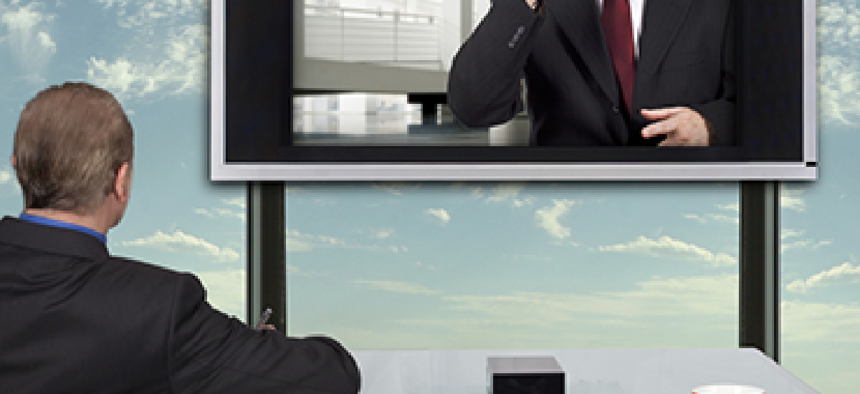Infrastructure a hurdle for videoconferencing legislation

Agencies might have trouble cutting travel budgets as much as a new bill proposes, and videoconferencing -- the legislation's preferred solution -- brings its own set of challenges.

Legislation introduced in the House of Representatives in July aims to reduce travel expenses for federal employees by up to half by 2017, but complying with such a robust cost-cutting measure could pose challenges to many federal agencies.
H.R. 2643, introduced by Rep. Michael Fitzpatrick (R-Pa.), would make videoconferencing an integral part of a plan developed by the director of the Office of Management and Budget to cut $7.5 billion off the $15 billion the government spends on travel each year.
Yet challenges in IT infrastructure, tight agency budgets and policy are potential barriers to entry for many agencies.
"To get that kind of reduction, you're going to have to have a significant infrastructure upgrade – you're increasing traffic across the network when your employees are videoconferencing," said Jason Parry, Collaboration Practice Director at Force 3, a federal IT solutions provider.
Agencies with highly developed IT infrastructures might not sweat the extra bandwidth required by employees engaging in more video conferences, but smaller agencies that haven't built out existing infrastructures yet might not be able to pony up the cash to modernize.
In addition, proprietary videoconferencing software can be an expensive acquisition for agencies that haven't dabbled in it before. But some new technologies could help alleviate the financial burden for agencies with tight budgets.
"Video conferencing is increasingly cloud-based or IP-enabled, so access can be available via an agency's established enterprise network," said Cindy Auten, general manager for Mobile Work Exchange.
"Agencies do not necessarily need to invest in new systems for video conferencing solutions, which can range from off-the-shelf services to dedicated meeting facilities that make it appear as if remote participants are actually in the room – and price points will vary," Auten added.
Fitzpatrick's bill incorporates aspects of several other executive and legislative policies, including the Telework Enhancement Act of 2010, Executive Order 13589 and OMB's 12-12-12 memorandum, which already called for agencies to reduce travel expenditures by 30 percent compared to 2010 levels.
Yet those policies have been interpreted and treated differently by various agencies, with NASA, for example, disallowing travel for employees when remote participation by phone or videoconference was possible. That move saved the agency $21 million in fiscal 2012, but overall savings realized from decreased travel and increased videoconferencing are likely to vary significantly from agency to agency.
Executive-branch videoconferencing policy would be set by OMB, but after the general guidelines are in place, agencies could tailor them to fit their mission.
"On the policy side of it, if [the bill] passes and it's in place, the question will be how agencies use videoconferencing, what they should use it for, and when you should do it as opposed to traveling and other means of communication," Parry said. "Enforcing that legislation if any of those policies are shaky, it really doesn't work."
Parry said cutting feds' travel costs in half by 2017 is a lofty goal -- one that might best be met by a "gradual approach" rather than a sudden shift. Any plan would have to be transparent so that savings are tracked, documented and potentially reallocated elsewhere, Parry added.
"I think that the best plan would look at a gradual reduction," Parry said. "It is not going to be like flipping a switch. For what they intend to reduce over the next few years, we would need a plan where a portion of the money being saved would be allocated back to a capital budget to be able to provide the infrastructure that is required to reach that 50 percent mark."






